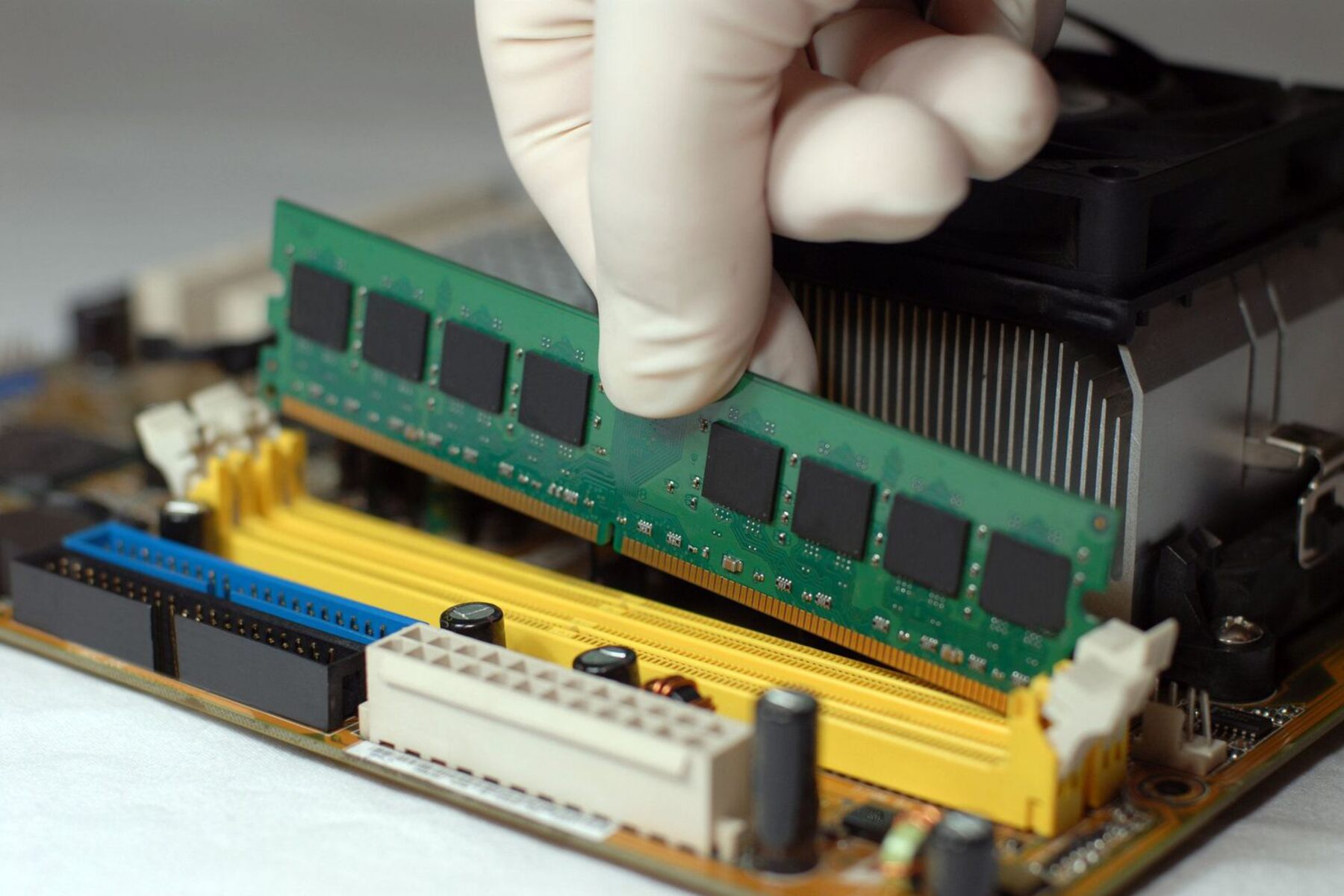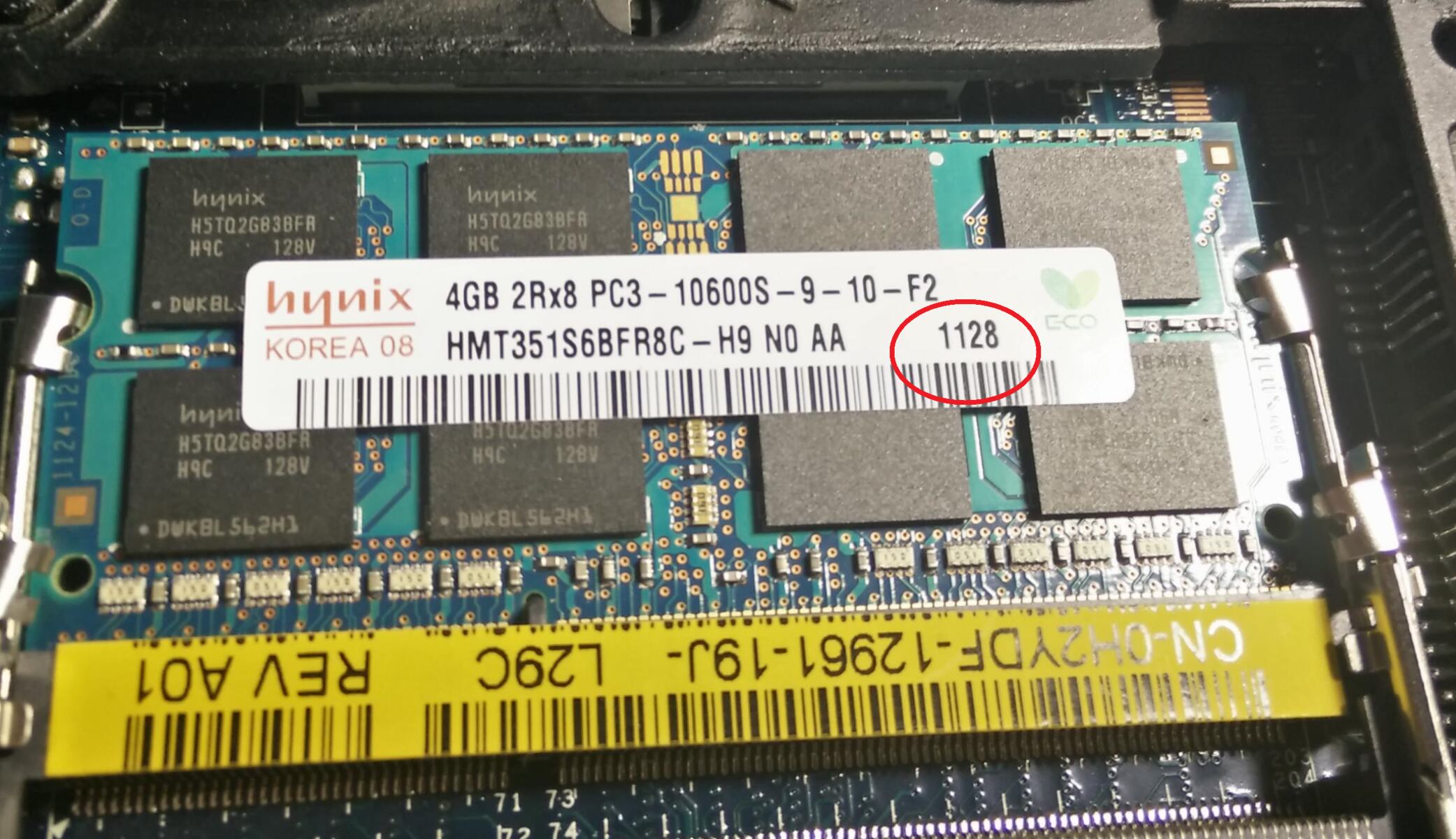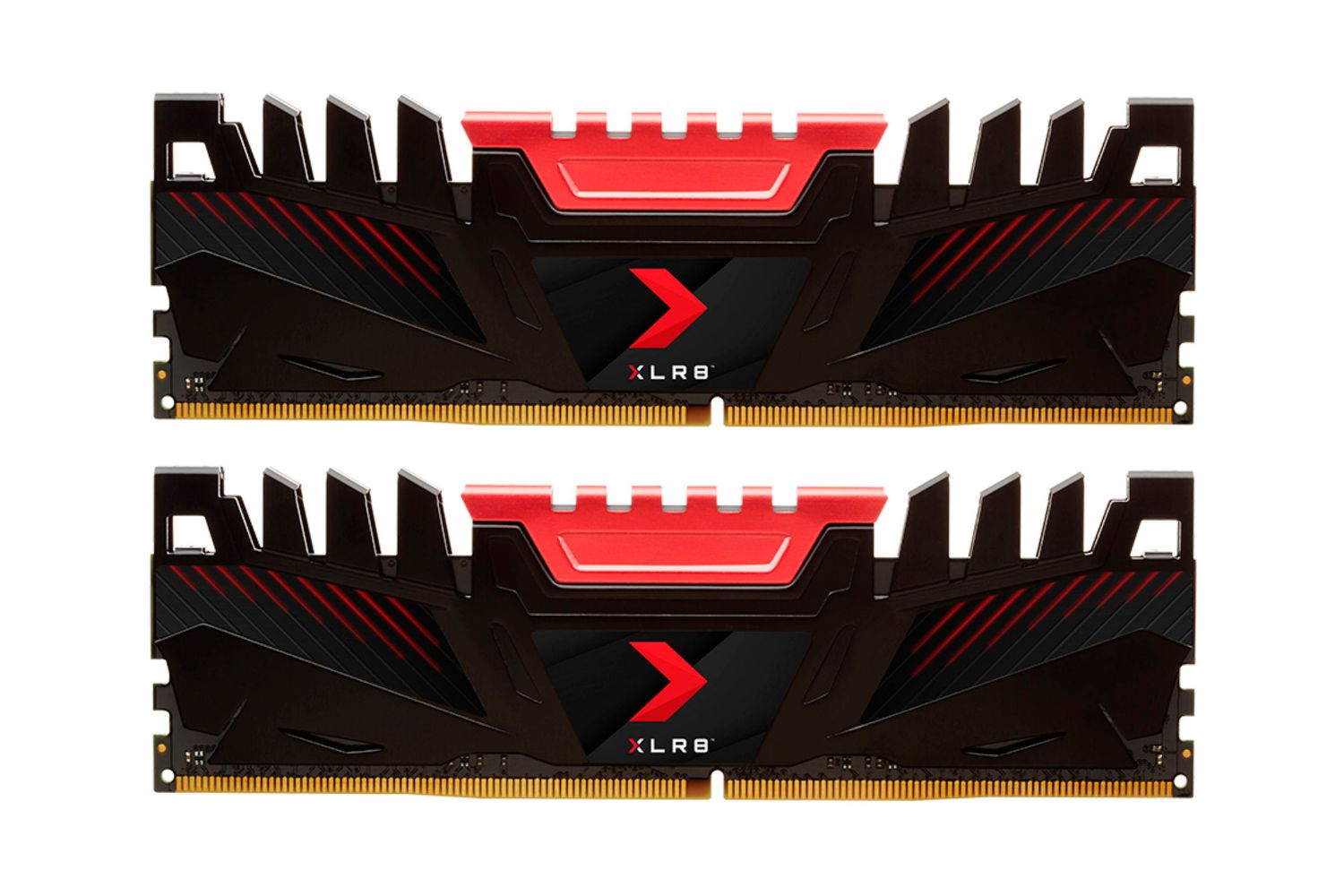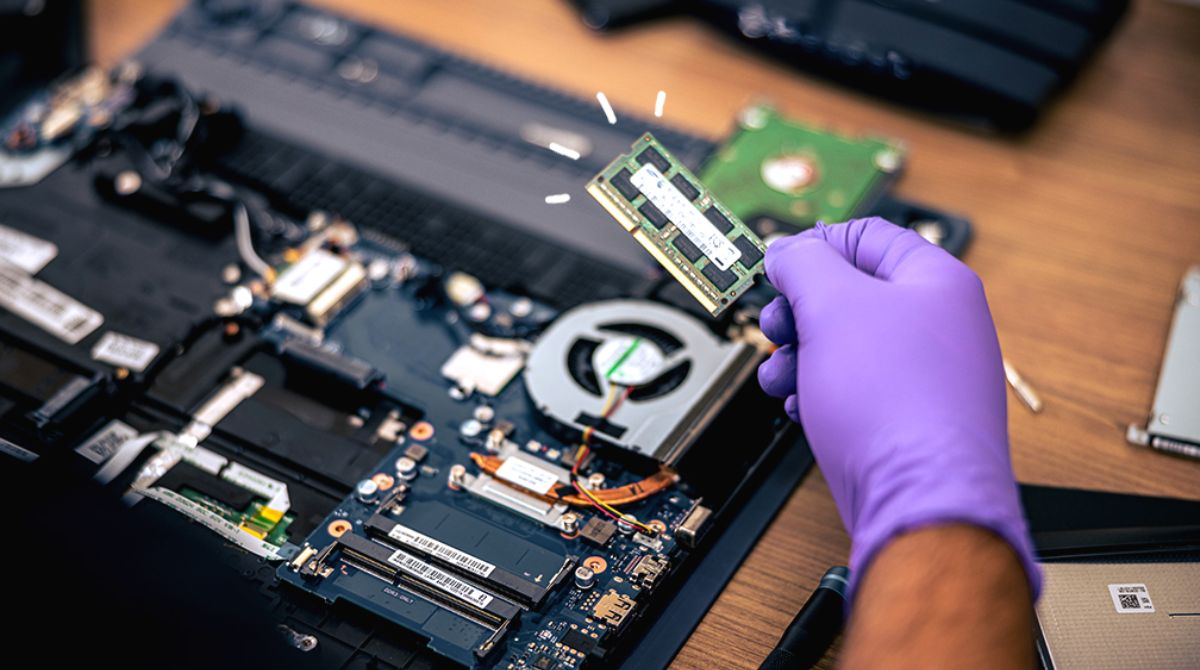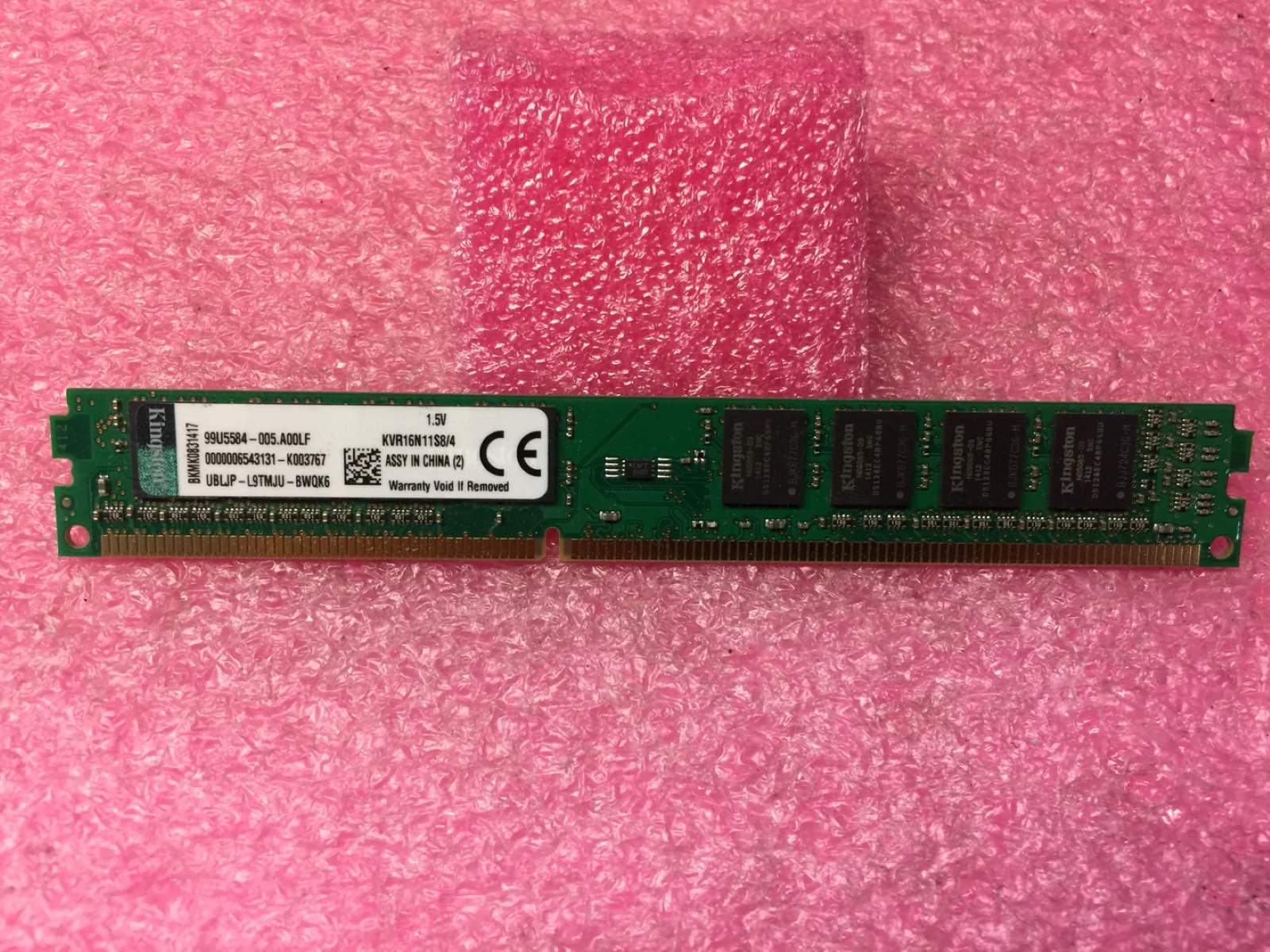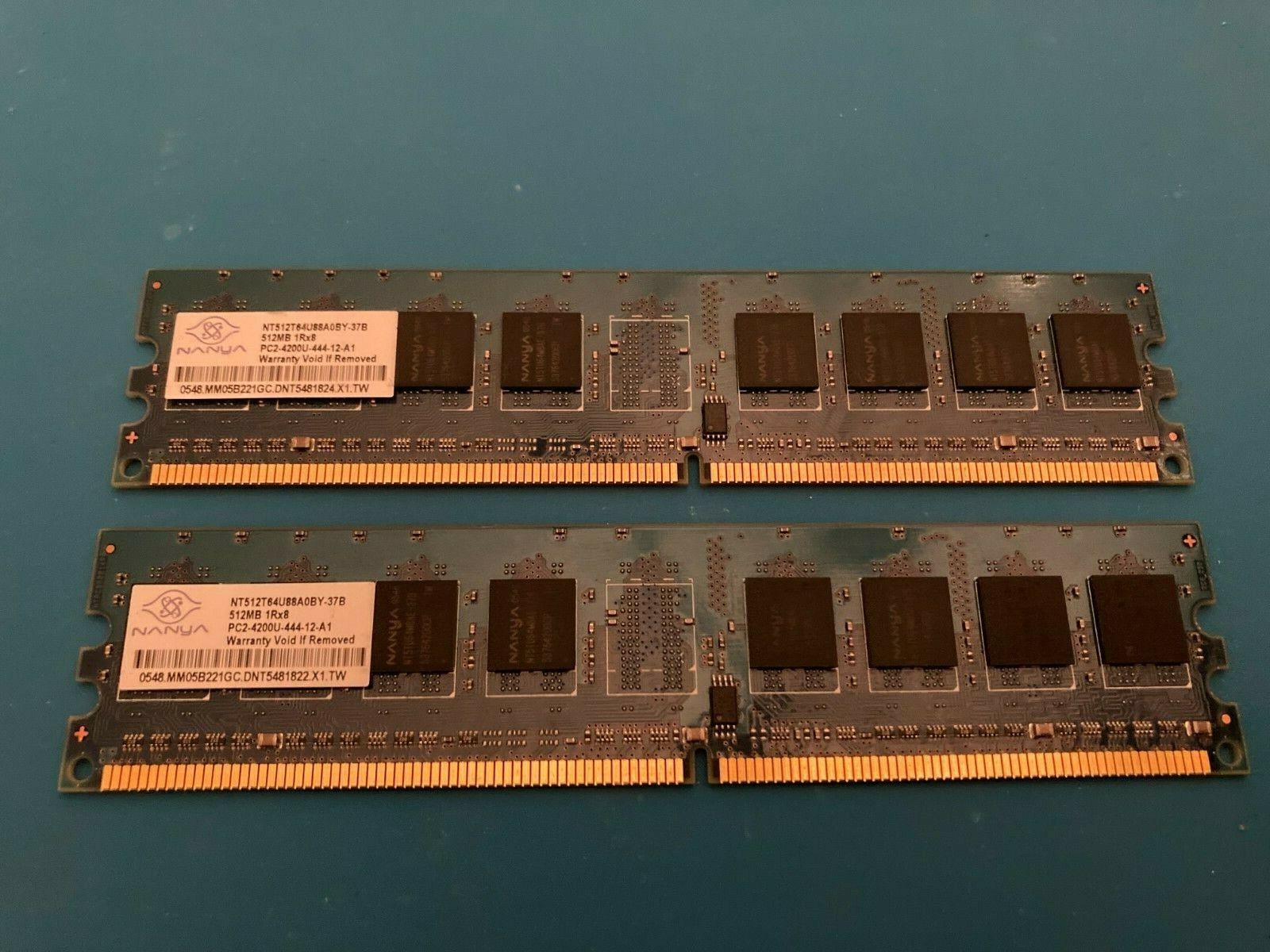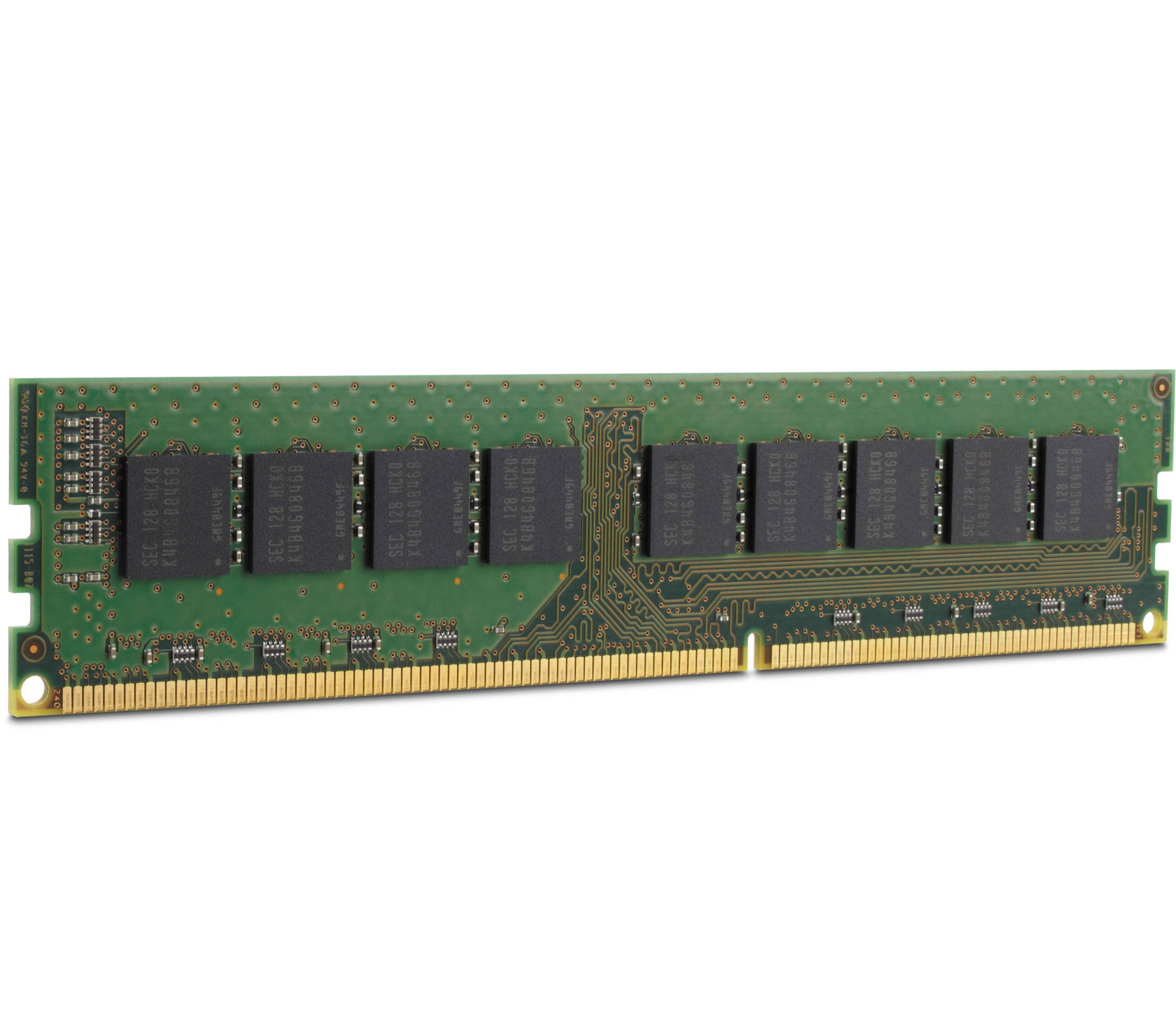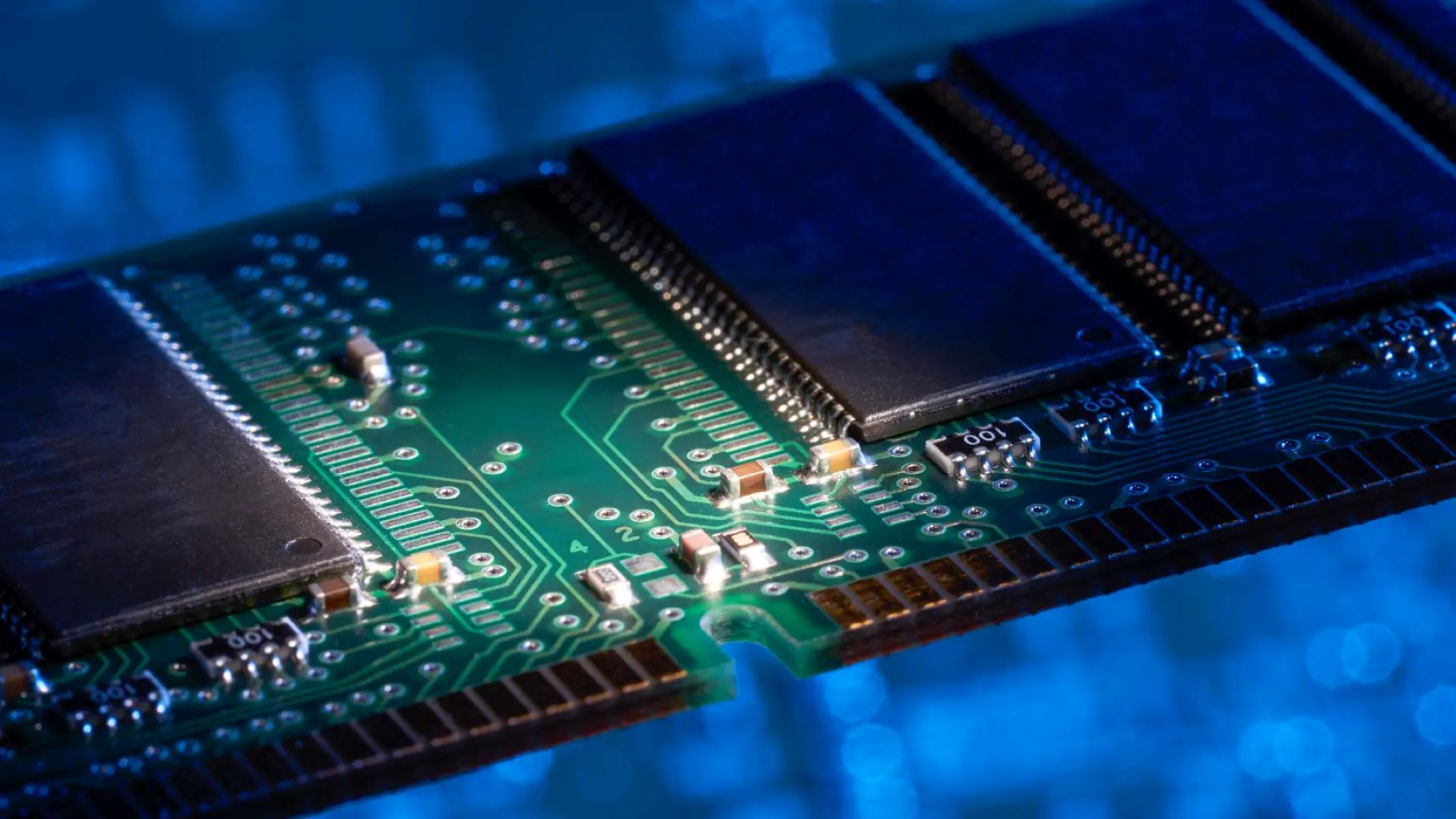Introduction
Welcome to the world of computer hardware! In the quest for faster and more efficient performance, various components play a vital role in determining the overall speed and capabilities of a computer system. One such crucial component is DIMM RAM. Whether you’re a tech enthusiast or a casual computer user, understanding the basics of DIMM RAM can greatly enhance your knowledge of computer hardware.
DIMM, which stands for Dual In-Line Memory Module, is a type of random access memory (RAM) used in computers. It serves as a temporary storage space for data that the computer’s processor needs to access quickly. Unlike other storage devices such as hard drives or solid-state drives, DIMM RAM is volatile, meaning that its contents are erased when the computer is powered off. This volatile nature allows for fast read and write operations, making it an essential component for computing tasks.
So, how does DIMM RAM work? Within DIMM RAM, there are countless tiny electronic components called memory cells. These cells can be thought of as individual buckets that store bits of data – either a 0 or a 1. Each bucket, or memory cell, is addressed by the computer’s processor using a specific location on the DIMM. When the processor needs to read or write data, it sends signals to the DIMM, requesting the necessary information. The DIMM then retrieves the data from the corresponding memory cells and returns it to the processor.
There are different types of DIMM RAM available in the market, each with its own specifications and capabilities. The most common type is DDR (Double Data Rate) DIMM, which has undergone several generations of improvements over the years. The latest version, DDR4, offers higher speeds, increased bandwidth, and lower power consumption compared to its predecessors. Other types of DIMM RAM, such as ECC (Error-Correcting Code) and Registered DIMMs, are designed for specific purposes like error detection and correction or high-performance server applications.
Before we delve deeper into the advantages and disadvantages of DIMM RAM, it’s important to understand how to install it properly. Installing DIMM RAM is relatively simple and involves shutting down the computer, opening the case, locating the DIMM slots on the motherboard, and carefully inserting the RAM modules into the slots. It’s important to ensure the modules are properly aligned and firmly seated to avoid any compatibility or stability issues.
In the following sections, we will discuss the benefits and drawbacks of DIMM RAM, as well as troubleshooting common issues that may arise. So, let’s dive into the world of DIMM RAM and uncover the secrets that make it an integral part of our computing experience.
What is DIMM RAM?
DIMM RAM, or Dual In-Line Memory Module RAM, is a type of memory module used in computers to provide temporary storage for data that is actively being processed. It is an essential component in determining the overall performance and speed of a computer system. DIMM RAM is designed to be easily insertable and removable, allowing for easy upgrades or replacements.
At its core, DIMM RAM consists of electronic circuits that store data in the form of digital 0s and 1s. These circuits, also known as memory cells, are organized in an array of rows and columns. Each cell can store a bit of data, representing either a 0 or a 1. By addressing the specific location of a memory cell, the computer’s processor can read or write data to that location.
DIMM RAM modules come in different sizes and capacities, typically ranging from 4GB to 64GB or even higher in some cases. The capacity of the RAM module determines how much data it can store at a given time. More RAM allows the computer to handle larger quantities of data and run multiple programs simultaneously without slowing down.
One notable feature of DIMM RAM is its volatility. This means that the data stored in DIMM RAM is erased when the computer is powered off or restarted. Unlike storage devices like hard drives or solid-state drives, which retain data even when the power is turned off, DIMM RAM is purely temporary storage. This volatility allows for faster read and write operations but requires the computer to fetch data from permanent storage devices each time it is powered on.
Every DIMM RAM module has a specific speed rating, measured in megahertz (MHz). The speed rating indicates how quickly the RAM can transfer data to and from the processor. Higher speed RAM can deliver faster data processing and improve overall system performance, especially when running resource-intensive applications or multitasking.
It’s important to note that DIMM RAM is not compatible with all computer systems. Different generations and types of DIMM RAM have different physical connectors and require matching motherboard slots. The most common type of DIMM RAM used today is DDR (Double Data Rate) RAM, with DDR3 and DDR4 being the prevailing generations. DDR4 RAM offers improved performance and energy efficiency compared to its predecessor, DDR3.
Overall, DIMM RAM plays a crucial role in determining the speed and performance of a computer system. By providing fast and efficient access to data for the processor, it allows for seamless multitasking, faster application loading times, and smoother overall user experience. Upgrading or adding more DIMM RAM can significantly enhance system performance, especially for tasks that require large amounts of data processing.
How does DIMM RAM work?
DIMM RAM, or Dual In-Line Memory Module RAM, is a critical component in a computer system that is responsible for providing temporary storage for data that is actively being processed by the computer’s processor. To understand how DIMM RAM works, let’s take a closer look at its internal components and the process of data retrieval and storage.
Within a DIMM RAM module, there are countless tiny electronic components called memory cells. These cells act as individual buckets that can store bits of data, with each bucket representing either a 0 or a 1. The memory cells are arranged in an organized grid of rows and columns, forming a structure known as an array.
When the computer’s processor needs to read or write data, it communicates with the DIMM RAM module through a series of electrical signals. These signals are sent along the memory bus, which is a pathway for data transmission between the processor and the DIMM RAM module. By addressing a specific location in the DIMM RAM module, the processor instructs it to retrieve or store data in the corresponding memory cell.
During a read operation, the DIMM RAM module retrieves the requested data from the memory cell and sends it back to the processor. The data is then processed by the processor for various computational tasks. Similarly, during a write operation, the DIMM RAM module stores the data sent by the processor in the specified memory cell, ready to be accessed and retrieved in the future.
One of the key principles behind DIMM RAM’s functionality is its volatile nature. Unlike storage devices such as hard drives or solid-state drives, which retain data even when the power is turned off, DIMM RAM requires a constant source of power to maintain the data stored within it. When the computer shuts down or is restarted, the contents of DIMM RAM are erased, making it a temporary form of storage.
The volatility of DIMM RAM allows for faster read and write operations since the data retrieval and storage processes don’t need to access permanent storage devices. Instead, the processor can quickly access the necessary data directly from the DIMM RAM module. This ability to access and process data rapidly makes DIMM RAM a crucial component in achieving fast and efficient performance in computer systems.
The speed of the DIMM RAM module, measured in megahertz (MHz), also plays a significant role in its performance. The higher the speed rating of the DIMM RAM, the faster it can transfer data to and from the processor. This translates into quicker data processing and improved overall system performance, particularly when dealing with applications that require intensive data handling or multitasking.
Overall, DIMM RAM’s function revolves around its ability to provide temporary storage for data actively used by the computer’s processor. By allowing quick and efficient retrieval and storage of data, DIMM RAM plays a fundamental role in determining the speed and responsiveness of a computer system, making it an integral component for optimal performance.
Different types of DIMM RAM
DIMM RAM, or Dual In-Line Memory Module RAM, comes in various types and generations, each offering different specifications and functionalities. Understanding the different types of DIMM RAM can help you choose the right module for your specific needs. Let’s explore some of the most common types of DIMM RAM available in the market today.
1. DDR (Double Data Rate) DIMM RAM: DDR DIMM RAM is one of the most prevalent types used in modern computer systems. It has undergone several generations of improvements, including DDR2, DDR3, and the latest, DDR4. DDR RAM modules are characterized by their high data transfer rates, with DDR4 being the fastest and most energy-efficient generation available. DDR DIMM RAM modules are backward compatible, meaning that newer generations can be used in motherboards designed for older DDR RAM, but with reduced performance.
2. ECC (Error-Correcting Code) DIMM RAM: ECC DIMM RAM is designed for applications that require high reliability and data integrity, such as servers or workstations. ECC RAM includes additional memory chips that perform error detection and correction, ensuring that any errors in the stored data are automatically fixed. This type of DIMM RAM is more expensive than non-ECC RAM but provides an added layer of protection against data corruption.
3. Registered DIMM RAM: Registered DIMM RAM, also known as buffered DIMM, is commonly used in servers, high-end workstations, and other enterprise-level systems. Registered RAM includes an additional register or buffer between the memory controller and the memory modules. This register helps reduce electrical loads and signal disruptions, allowing for larger memory capacities and improved system stability.
4. SO-DIMM (Small Outline DIMM) RAM: SO-DIMM RAM modules are physically smaller and more compact than standard DIMM modules. They are commonly used in laptops, compact desktops, and other smaller form factor devices. SO-DIMM RAM is available in various generations, such as DDR3 and DDR4, and provides comparable performance to standard DIMM RAM in a smaller package.
5. Low Voltage DIMM RAM: Low voltage DIMM RAM modules are designed to operate at lower voltage levels than standard DIMM modules. These modules consume less power and generate less heat, making them ideal for systems where energy efficiency and cooling are crucial factors. Low voltage DIMM RAM operates at 1.35V instead of the traditional 1.5V used by standard DIMM modules.
It’s important to note that the compatibility and performance of a DIMM RAM module depend on the specifications of the motherboard and the limitations imposed by the system’s architecture. Before purchasing a DIMM RAM module, it’s essential to ensure that it is compatible with your system and meets the required specifications.
Understanding the different types of DIMM RAM allows you to make informed decisions when upgrading or replacing your computer’s memory modules. Whether you’re looking for high-performance DDR4 RAM, error-correcting ECC RAM, or compact SO-DIMM modules for a laptop, choosing the right type of DIMM RAM can significantly impact your system’s performance and overall computing experience.
Advantages of DIMM RAM
DIMM RAM, or Dual In-Line Memory Module RAM, offers several advantages that make it an essential component in modern computer systems. Understanding these advantages can help you appreciate the importance of DIMM RAM in improving system performance and user experience. Let’s explore some of the key benefits of DIMM RAM:
1. Increased system performance: One of the primary advantages of DIMM RAM is its ability to enhance the overall performance of a computer system. By providing faster and more efficient data access and retrieval, DIMM RAM allows the processor to process instructions and perform computations at a higher speed. This translates into faster application loading times, smoother multitasking, and improved overall system responsiveness.
2. Improved multitasking capabilities: With larger amounts of DIMM RAM, a computer system can handle multiple tasks and applications simultaneously without experiencing significant performance slowdowns. DIMM RAM provides temporary storage for data that is actively being processed, allowing the processor to switch between tasks seamlessly. This is especially beneficial for users who frequently work with resource-intensive applications or engage in multitasking activities.
3. Quick data access and retrieval: DIMM RAM enables rapid access and retrieval of data, thanks to its volatile nature and direct connection to the processor. This swift data transfer allows the processor to quickly read and write data, resulting in improved system performance. Whether it’s opening large files, accessing frequently used data, or running complex computations, DIMM RAM ensures that the data is readily available, reducing lag times and boosting productivity.
4. Upgradability and flexibility: DIMM RAM modules are designed to be easily insertable and removable, allowing for convenient upgrades or replacements. If you find that your computer’s performance is lacking, adding more DIMM RAM is a simple and effective way to improve the system’s capabilities. Additionally, DIMM RAM modules are available in a range of sizes and capacities, providing flexibility to meet individual needs and budget constraints.
5. Compatibility with different systems: DIMM RAM modules are compatible with a wide range of computer systems, from desktops to servers. This makes it easier to find suitable DIMM RAM for your specific system requirements. Additionally, different generations of DIMM RAM, such as DDR, DDR2, DDR3, and DDR4, allow for backward compatibility, ensuring that newer RAM modules can be used in older systems with reduced performance, if needed.
6. Energy efficiency: DIMM RAM modules, especially the newer DDR4 generation, offer improved energy efficiency compared to their predecessors. They require lower voltage levels to operate, resulting in reduced power consumption and heat generation. This not only benefits the environment by reducing energy usage but also contributes to a cooler and quieter computing experience.
By harnessing the advantages provided by DIMM RAM, users can significantly enhance their computing experience. From faster performance and smoother multitasking to easy upgradability and energy efficiency, DIMM RAM plays a crucial role in optimizing system capabilities and improving productivity.
Disadvantages of DIMM RAM
While DIMM RAM, or Dual In-Line Memory Module RAM, offers numerous advantages, it is important to be aware of its potential drawbacks. Understanding the disadvantages of DIMM RAM can help you make informed decisions when it comes to system upgrades and performance enhancements. Let’s explore some of the key disadvantages of DIMM RAM:
1. Cost: DIMM RAM can be more expensive compared to other forms of computer memory. As technology advances and newer generations of DIMM RAM are introduced, the cost per unit tends to be higher. Higher capacity DIMM RAM modules, such as those with larger memory sizes, can also come with a hefty price tag. This can pose a financial barrier for users looking to upgrade their system’s memory or build a high-performance computer system.
2. Compatibility limitations: DIMM RAM modules are not universally compatible with all computer systems. They require specific motherboard slots and matching specifications to ensure proper compatibility. Different types and generations of DIMM RAM, such as DDR and DDR4, have different physical connectors and voltage requirements. Users must ensure that their system’s motherboard supports the type of DIMM RAM they intend to use. Additionally, older systems may have limitations on the maximum amount of RAM they can support, which may restrict the upgrade potential for some users.
3. Volatile memory: DIMM RAM is a form of volatile memory, meaning that its contents are erased when the computer is powered off or restarted. This can result in data loss if users fail to save their work or have proper backup measures in place. Unlike non-volatile storage devices such as hard drives or solid-state drives, which retain data even when not powered, DIMM RAM requires the continuous flow of electricity to maintain its stored data. While this volatility enables faster read and write operations, it also presents a risk of data loss if proper precautions are not taken.
4. Limited storage capacity: DIMM RAM serves as temporary storage for active data processing and retrieval. However, its storage capacity is limited compared to non-volatile storage devices like hard drives or solid-state drives. The amount of data that can be stored in DIMM RAM directly affects the system’s ability to handle large amounts of data or run resource-intensive applications. Users with extensive storage needs may find that the limited capacity of DIMM RAM restricts their ability to fully utilize their system’s potential.
5. Heat generation: DIMM RAM modules can generate a significant amount of heat during operation. This is particularly true when using modules with higher speeds and capacities. Excessive heat can affect the overall stability and performance of the RAM and other system components. To mitigate heat-related issues, proper system cooling and airflow must be ensured, such as through the use of adequate cooling fans, heatsinks, or liquid cooling systems.
Despite these disadvantages, DIMM RAM remains an integral component in computer systems due to its significant advantages. While cost, compatibility limitations, volatile memory, limited storage capacity, and heat generation are important considerations, they can be managed through careful selection, proper system maintenance, and regular hardware upgrades.
How to Install DIMM RAM
Installing DIMM RAM, or Dual In-Line Memory Module RAM, is relatively straightforward and can greatly enhance the performance of your computer system. If you’re looking to upgrade or add more memory to your system, follow these steps to install DIMM RAM correctly:
1. Prepare your computer: Before installing DIMM RAM, ensure that your computer is turned off and disconnected from the power source. This step is crucial to avoid any electrical damage to your system or yourself during the installation process.
2. Identify the DIMM slots: Open your computer case and locate the DIMM slots on the motherboard. The number of slots may vary depending on your motherboard model, but they are commonly located near the CPU socket. DIMM slots are usually color-coded, with corresponding labels that indicate the order in which the modules should be installed.
3. Handle DIMM RAM modules with care: DIMM RAM modules are sensitive electronic components, so it’s important to handle them with care. Avoid touching the gold contacts or any exposed circuitry as it can cause damage. Hold the DIMM modules by their edges, ensuring a firm but gentle grip.
4. Align the DIMM modules: Align the notch on the DIMM module with the key in the DIMM slot to ensure proper orientation. The DIMM module should only fit in one direction; do not force it if it doesn’t slide in easily. Align the module correctly and gently insert it into the slot at an angle, maintaining equal pressure on both ends until it is completely inserted.
5. Secure the DIMM module: Once the DIMM module is inserted into the slot, push it down gently until it clicks into place. Make sure the module is fully seated and that the retaining clips on both sides of the slot lock into the notches on the DIMM module. This ensures a secure and stable connection.
6. Repeat for additional modules: If you are installing multiple DIMM modules, repeat steps 4 and 5 for each module. Refer to the motherboard’s manual or specifications to ensure correct placement and order of the modules.
7. Close the computer case: Once all the DIMM modules are securely installed, carefully close the computer case and ensure that all screws or latches are tightened. This protects the internal components from dust and physical damage.
8. Power up and verify: Connect your computer back to the power source, turn it on, and wait for it to boot up. Check the system information or use diagnostic software to verify that the newly installed DIMM RAM modules are recognized and functioning correctly. If any issues arise, double-check the installation and ensure compatibility with your system.
Remember, when installing DIMM RAM, it is essential to follow proper anti-static precautions. Consider using an anti-static wristband or touching a grounded metal object to discharge any static electricity from your body before handling the DIMM modules.
By following these steps and guidelines, you can successfully install DIMM RAM and boost your system’s memory capacity, leading to improved performance and faster data processing.
Troubleshooting Common Issues with DIMM RAM
DIMM RAM, or Dual In-Line Memory Module RAM, is a vital component in computer systems that can sometimes encounter issues. Understanding and troubleshooting common problems associated with DIMM RAM can help you identify and resolve any issues that may arise. Here are some troubleshooting tips for common DIMM RAM issues:
1. Compatibility Issues: If your system experiences instability, crashes, or fails to boot up after installing new DIMM RAM, compatibility issues may be the culprit. Ensure that the RAM modules are compatible with your motherboard in terms of type, generation, and capacity. Consult your motherboard’s manual or manufacturer’s website for the recommended RAM specifications.
2. Improper Installation: Incorrectly installed DIMM RAM can cause various issues such as system instability and error messages. Make sure that the RAM modules are fully inserted into the DIMM slots and secured with the retaining clips. Check that the modules are oriented correctly and fully seated in the slots.
3. Uneven Matched RAM Modules: If you have multiple DIMM RAM modules installed, using mismatched or incompatible modules can result in system instability. Ensure that all RAM modules are of the same type, brand, and capacity. Avoid mixing different generations or speeds of DIMM RAM modules, as this can lead to compatibility issues.
4. Dust or Loose Connections: Over time, dust can accumulate on DIMM RAM modules and in DIMM slots, leading to poor contact and connection issues. Carefully remove the DIMM modules and clean them using compressed air or a clean, dry cloth. Similarly, clean the DIMM slots to remove any dust or debris. Reinstall the DIMM modules securely to establish a proper connection.
5. Faulty RAM Module: Sometimes, a DIMM RAM module itself may be faulty. If you suspect a specific module is causing issues, try removing it and test the system with the remaining modules. If the system stabilizes, it is likely that the removed module is defective. Consider testing the suspected module in another compatible system or contact the manufacturer for possible warranty replacement.
6. Insufficient Power Supply: Insufficient power supply can cause erratic behavior and system instability. Ensure that your system’s power supply can adequately support the total power requirements, including the DIMM RAM modules, as well as other hardware components. Upgrading the power supply may be necessary if you are consistently experiencing power-related issues.
7. Overclocking or Incorrect BIOS Settings: Incorrect BIOS settings, such as overclocking the DIMM RAM or applying incompatible timings, can lead to system instability. Reset the BIOS settings to default or recommended values and disable any overclocking features. Consult your motherboard’s manual for guidance on setting the appropriate values for DIMM RAM.
8. Memory Testing: If you are experiencing frequent crashes, freezes, or other memory-related issues, running a memory test can help identify if there are any problems with the DIMM RAM modules. Various software tools, such as MemTest86, can thoroughly test the RAM for errors and provide insights into potential issues.
If you are unable to identify or resolve the issues with DIMM RAM, consulting a computer technician or contacting the manufacturer’s support can help diagnose and resolve the problem. Remember to provide detailed information about the issue, your system specifications, and any troubleshooting steps you have already taken.
By understanding and troubleshooting common problems that can occur with DIMM RAM, you can ensure optimal performance, stability, and reliability for your computer system.
Conclusion
In conclusion, DIMM RAM (Dual In-Line Memory Module RAM) is a crucial component in modern computer systems that provides temporary storage for actively processed data. It offers several advantages, including increased system performance, improved multitasking capabilities, and quick data access and retrieval. DIMM RAM is also flexible and upgradable, allowing users to easily enhance their system’s memory capacity as needed.
However, it is essential to consider the potential disadvantages of DIMM RAM, such as cost, compatibility limitations, volatility, limited storage capacity, and heat generation. Proper handling, installation, and troubleshooting techniques can help overcome these challenges and ensure the optimal functioning of DIMM RAM.
When installing DIMM RAM, it is important to follow the correct procedures, ensuring that the modules are correctly aligned, firmly seated, and securely locked into place. Additionally, troubleshooting common issues related to compatibility, installation, memory mismatches, dust, and faulty modules can help resolve any problems that may arise.
By understanding the benefits and drawbacks of DIMM RAM and knowing how to properly install and handle it, users can unlock the full potential of their computer systems. Whether it’s improving performance for demanding tasks, enhancing multitasking capabilities, or simply ensuring a smoother and more efficient computing experience, DIMM RAM plays a vital role in optimizing system performance.
As technology advances, the world of DIMM RAM continues to evolve, with new generations and advancements being introduced. Staying updated with the latest RAM technologies and advancements can help users make informed decisions when it comes to upgrading their systems.
Overall, DIMM RAM is a fundamental component that significantly impacts the speed, responsiveness, and capabilities of computer systems. By harnessing its power and understanding its intricacies, users can unleash the full potential of their machines and enjoy an enhanced computing experience.









